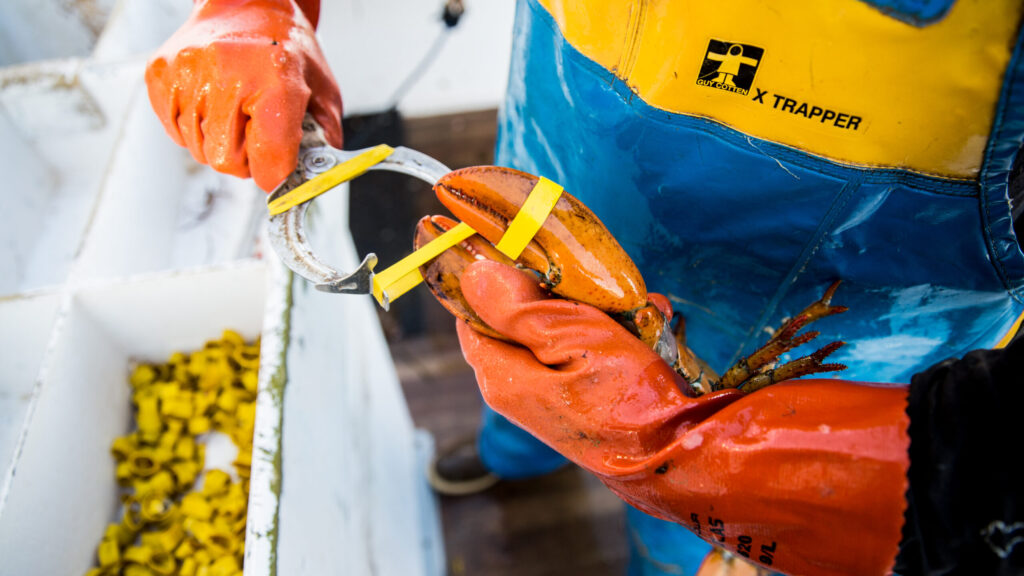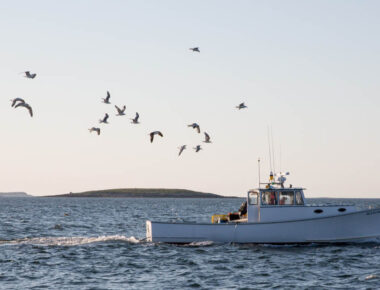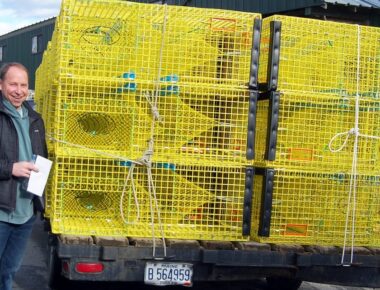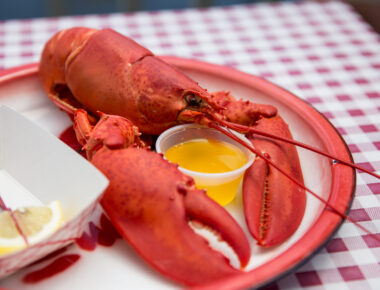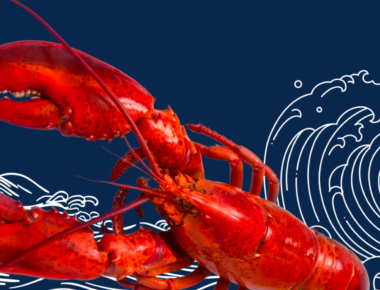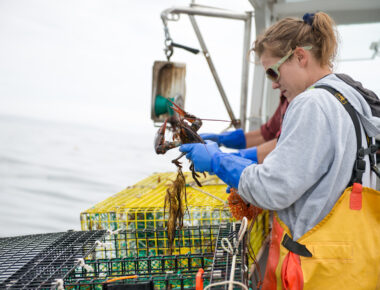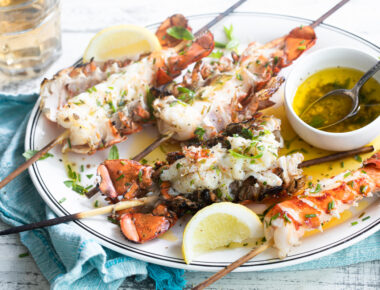As a live product, Maine Lobsters are handled with great care from the moment they reach the boat until the moment they reach your dinner table. Handling affects the lobsters’ health, stress levels, and even their taste. Cyrus Sleeper, a lobsterman from South Thomaston, Maine, talks about why handling is so critically important to the Maine Lobster industry.
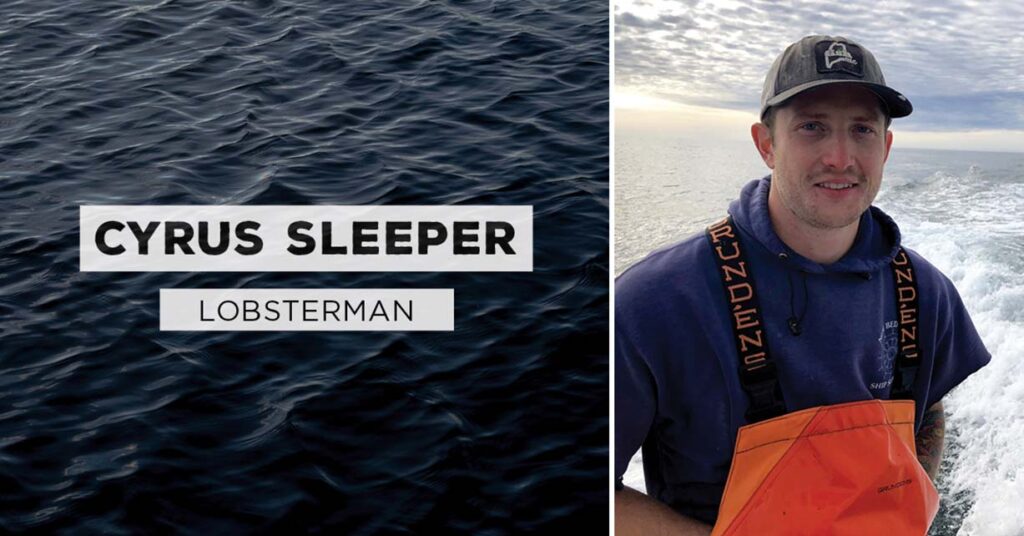
Why is handling so important?
CS: It’s important to handle the lobsters properly because of the distance they travel while still alive. The journey from the water to your table can take from 5 to 7 days. A healthy lobster is going to last longer in shipping.
What happens to lobsters when they’re mishandled?
CS: Lobsters get stressed out by being mishandled. It’s not like your and my stress, it’s more biological. It’s important to keep the lobster’s stress levels low, and the fishermen’s contact with them is only one part of it.
Can you walk me through the handling process on your boat?
CS: When a lobster trap breaks the surface of the water, we want to get them out of the trap as fast as possible so that the lobsters don’t have a chance to damage each other. But even though it happens quickly, there’s a lot of care that goes into this stage of the process. The traps have “runners” on the bottom of the trap so that any claws and legs don’t get damaged when the trap is on the rail. And only one lobster is handled at a time.
We get them out of the trap quickly and get them into a sorting area. This is called a “cull through,” and that’s where we measure the lobsters to identify keepers, check for eggs or V-notches, and put bands on.

Lobsters you can’t keep will go immediately back into the ocean. Lobsters can survive out of the water, but we want the culling process to be fast to reduce stress on the animal. They’re only out of the water from 5-30 seconds. I have two other crewmen on my boat, and one of those guys is focused on sorting and banding full time.
Is there anything else that happens to lobsters once they’re caught?
CS: The keepers [lobsters that are big enough, but not too big, and are not marked as egg-bearing females] go right into a saltwater tank that’s circulating water constantly. The saltwater is important because it’s close to their natural habitat. They stay there from anywhere from just a few hours to twelve hours.
On the dock, we load the lobsters from the tank into a plastic crate, which is weighed. It’s the last step, but even here we take a lot of care in how the lobsters are handled – for example, we use two ropes instead of one to lift the crates off the boat, so that the lobsters don’t all shift to one side.
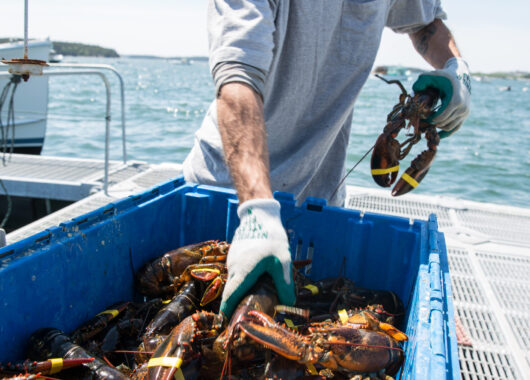
Once the lobsters are on the dock, the lobsterman’s job is done, however, there are further culling and sorting phases further down the supply chain. The industry is always checking to make sure everything that continues on through the supply chain is in good shape.
Lobsters can also last longer in refrigeration. They go into a catatonic state, putting life in slow motion for them. This actually mimics what happens in nature, in the winter when there’s not a lot of food available.
What do you tell the sternmen on your boat about handling?
CS: To remember that you’re handling a food product and that it’s a live animal. You want to treat it like an egg. You have to have a certain amount of respect for the animal, and you don’t want to cause harm.
Are there differences in handling with New Shell and Hard Shell lobsters?
CS: I’m a stickler for good handling, and I believe the best measure of your ability is how you handle the lobster at all times. But the shells are definitely tougher in the winter.
There are also different degrees of New Shell. If a lobster is caught just after molting its shell, it’s usually destined for the processing plant. They’re not as hearty in shipping. But there are also plenty of lobsters whose New Shells have gone through a certain amount of hardening. With proper handling and with proper selection, those New Shells can be shipped anywhere.
We’re working hard to make New Shell available to everyone in the world.


